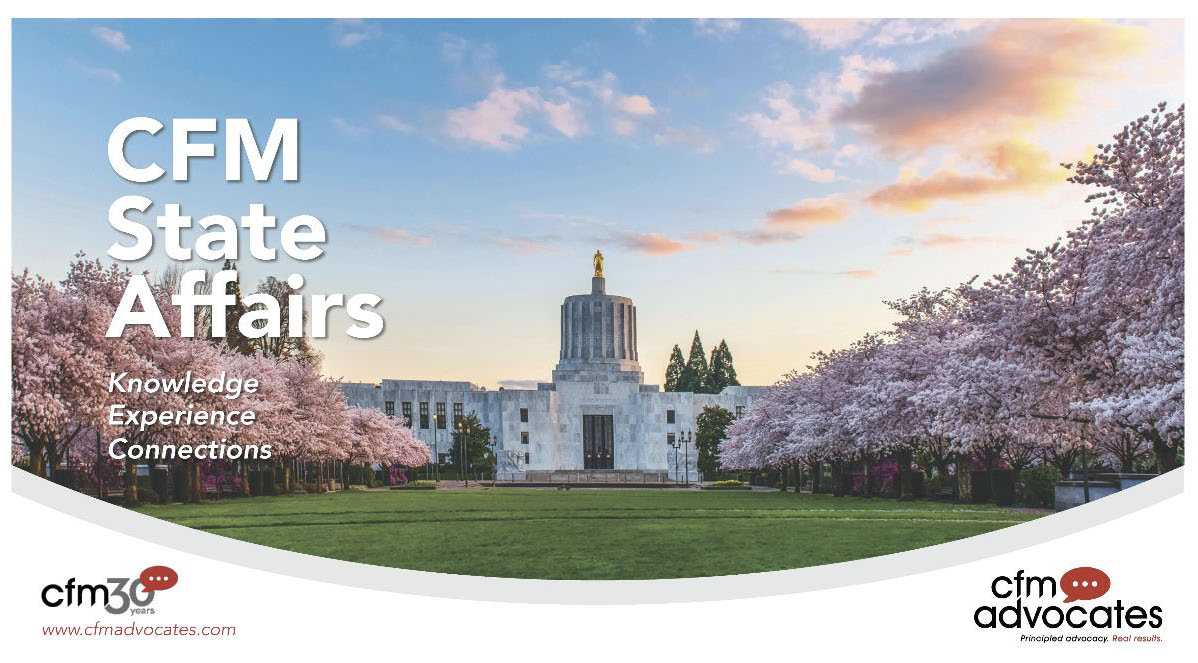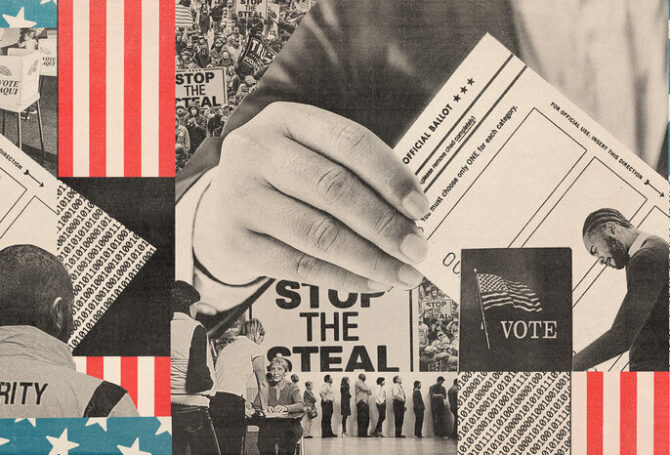
News Story Offers Detail, Perspective and Insight on Measure 110 Reversal
Reversing Oregon’s experiment with drug decriminalization in Measure 110 was hailed as one of the major achievements of the 2024 legislature. But what happens now? Oregon Capital Chronicle reporter Ben Botkin tried to answer that question.
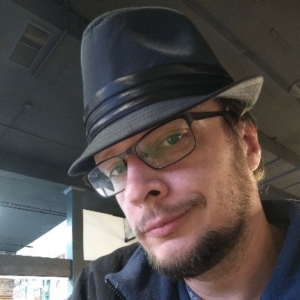 “Lawmakers culminated months of discussions and debate that roped in everyone from police officers to addiction specialists with a bill that sets Oregon on a new path to tackle drug addiction,” Botkin wrote. “[House Bill 4002] directs local agencies to build a new system to recriminalize drugs while trying to shepherd people addicted to drugs toward recovery.”
“Lawmakers culminated months of discussions and debate that roped in everyone from police officers to addiction specialists with a bill that sets Oregon on a new path to tackle drug addiction,” Botkin wrote. “[House Bill 4002] directs local agencies to build a new system to recriminalize drugs while trying to shepherd people addicted to drugs toward recovery.”
That new system needs to be ready by September when the new law recriminalizing drug possession takes effect.
Ben Botkin covers justice, health and social services issues for the Oregon Capital Chronicle.
Botkin’s story usefully includes a graphic depicting how the anticipated Oregon Drug Prevention Plan is intended to work. It shows when a person is cited or arrested for drug possession, they can go directly to a drug treatment program, if available, or they can be arraigned in court and offered a conditional discharge if they undergo treatment. Defendants who decline or drop out of drug treatment could face jail time.
One of the critical compromises lawmakers made to pass HB 4002 was to “give law enforcement, prosecutors and local officials a voice in how the programs will operate,” Botkin reported. “The new system will include new and expanded addiction treatment facilities throughout the state. Lawmakers also provided more money for recovery houses so people have a place to stay off the streets and away from the direct temptation of using.”
“These services are supposed to aid people in the years ahead and gradually pull Oregon out of its fentanyl-fueled drug crisis,” Botkin observed. “But drugs will continue to flood the state. The programs won’t all work the same, and each county may face different obstacles. These new programs could forge new connections among siloed professionals involved with drug users, but specialists do not expect the rollouts to be smooth.”
Botkin added, “Critics say a lot is at stake and that a lot of parts need to fit together to make this new approach work.”
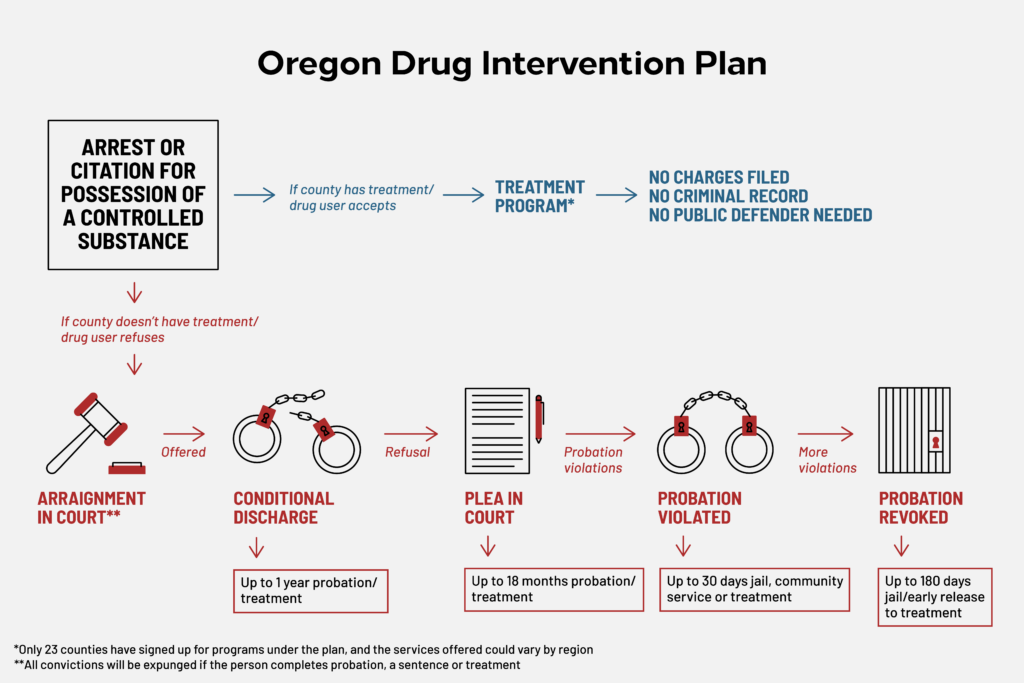
Expanded Treatment Options
Oregon doesn’t have enough drug treatment options. Lawmakers approved $211 million to expand treatment options and availability, but that will take time. Shorter term options included in HB 4002 include preventing commercial and Medicaid insurers from requiring prior authorizations for medication of treatment. Pharmacists will be allowed to provide emergency refills of addiction medication used in treatment, allowing patients to stay on medication if it’s lost or stolen.
 Deflection programs are the core strategy built into HB 4002. “When police officers find someone with a small quantity of hard drugs, the person will be given the option to enter a program and connect with a medical provider or other services to start their recovery,” Botkin explained. ”If they do, they will not face any jail time, a criminal charge, and they won’t need a lawyer.”
Deflection programs are the core strategy built into HB 4002. “When police officers find someone with a small quantity of hard drugs, the person will be given the option to enter a program and connect with a medical provider or other services to start their recovery,” Botkin explained. ”If they do, they will not face any jail time, a criminal charge, and they won’t need a lawyer.”
“If the person declines to enter a deflection program, they will be charged with the misdemeanor, but will be offered probation with treatment if it’s available,” he added. “Under the bill, the person will only serve jail time if they violate or fail their probation.”
“Everyone who is charged through the court system will eventually have their cases expunged,” Botkin reported. “The emphasis on probation instead of jail in the courts is a requirement in all counties, including the 13 that have not opted for deflection programs.”
Making Deflection Work
The trick is making deflection a viable pathway for drug users to seek treatment. Botkin quoted Dr. Todd Korthuis, an addiction treatment specialist at Oregon Health & Science University, who said, “The strongest pathways will need to be a true partnership between deflection programs and treatment providers who prescribe addiction medications.”
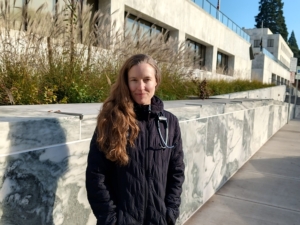 Botkin also quoted Dr. Moxie Loeffler, Oregon medical director of Community Medical Services in Salem who treats people with opioid addiction. She said ,“The goal of having deflection programs in place will make people in criminal justice and law enforcement aware of the opportunity to treat patients, and to think of people in custody as patients first.”
Botkin also quoted Dr. Moxie Loeffler, Oregon medical director of Community Medical Services in Salem who treats people with opioid addiction. She said ,“The goal of having deflection programs in place will make people in criminal justice and law enforcement aware of the opportunity to treat patients, and to think of people in custody as patients first.”
Adequate Treatment Resources
Botkin cites a recent state report that found Oregon has “a shortage of nearly 3,000 beds for behavioral health and addiction treatment.”
“Treatment is not available,” Grant Hartley, Multnomah County director for Metropolitan Public Defenders, told Botkin. “That’s the thing that’s getting lost and frankly giving the public a false sense of confidence in this. We don’t want somebody going through all that process and being screened and wanting treatment, only to say that we don’t have it available because they won’t trust the process in the future.”
While Hartley supports deflection programs, he said, “Often, street-level intervention with case managers and specialists who are in recovery is the most successful in drawing drug users toward treatment. That person doesn’t know that an officer is actually nice and progressive and really wants them to just get treatment and doesn’t care about them going to jail. They see a badge and a gun.”
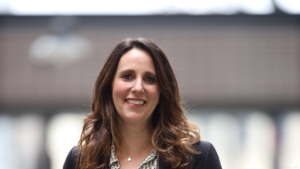 Tera Hurst, executive director of the Health Justice Recovery Alliance, a nonprofit with members that provide various services funded under Measure 110, told Botkin, “One of my biggest concerns with this bill is that the people are going to try and do this really fast. And they’re not going to actually take the time it needs to really build it out and build the relationships between the providers and law enforcement.”
Tera Hurst, executive director of the Health Justice Recovery Alliance, a nonprofit with members that provide various services funded under Measure 110, told Botkin, “One of my biggest concerns with this bill is that the people are going to try and do this really fast. And they’re not going to actually take the time it needs to really build it out and build the relationships between the providers and law enforcement.”
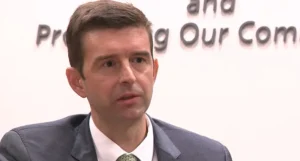 Washington County District Attorney Kevin Barton raised another concern to Botkin. “Where do we say that we’ve successfully deflected someone? That is, I think, a big unanswered question at this point. And that’s where it’s going to look different, I suspect between different counties. It can’t just be, ‘Well, we gave someone a pamphlet or we let them call a phone number or they talked to someone one time or three times.’”
Washington County District Attorney Kevin Barton raised another concern to Botkin. “Where do we say that we’ve successfully deflected someone? That is, I think, a big unanswered question at this point. And that’s where it’s going to look different, I suspect between different counties. It can’t just be, ‘Well, we gave someone a pamphlet or we let them call a phone number or they talked to someone one time or three times.’”
Barton also pointed to differences in approaches by cities within a county. “Washington County could face more difficulty in getting the agencies in Forest Grove, Beaverton, Sherwood and Tigard, for example, to coordinate to make the program work,” Barton said.
Shortage of Public Defenders
Even though the goal of HB 4002 is to get drug users into treatment, some of those arrested will show up in court and require legal representation. A chronic shortage of public defenders in Oregon – a new report says the state has 506 public defenders but needs almost twice that many – could result in drug users languishing in jail or let go.
Barton said Washington County in 2023 had 7,800 incidents in which defendants failed to show up for court appearances. “So how are we going to address that landmine as we move forward?” Barton asked Botkin. “Police can’t simply arrest people and put them in jail when they fail to appear.”
More Legislation to Follow
Passage of HB 4002 succeeded in avoiding an initiative this fall that would have imposed stricter penalties on drug users. But HB 4002 may not be the final legislative word on drug recriminalization.
Governor Kotek has promised to “hold counties accountable” and legislative leaders said HB 4002 won’t be the last word on dealing with drug addiction and drug overdoses.
Prevention and Peer Counselors
The scramble to unwind Measure 110 squeezed out discussions of how to promote drug awareness and prevention, which many think is the best long-term strategy to reduce drug addiction and avoid drug overdoses. The Oregon Drug Intervention Plan references prevention, but provides no details.
 In his comments made to Botkin, Grant Hartley referred to “specialists who are in recovery”. His reference is to credentialed peer counselors who have recovered from addiction and can be among the most convincing voices about the dangers of drugs and the slide into addiction.
In his comments made to Botkin, Grant Hartley referred to “specialists who are in recovery”. His reference is to credentialed peer counselors who have recovered from addiction and can be among the most convincing voices about the dangers of drugs and the slide into addiction.
Behavioral health clinics already use peer counselors, which may represent a largely untapped resource to bolster addiction treatment, street intervention and drug use prevention.
